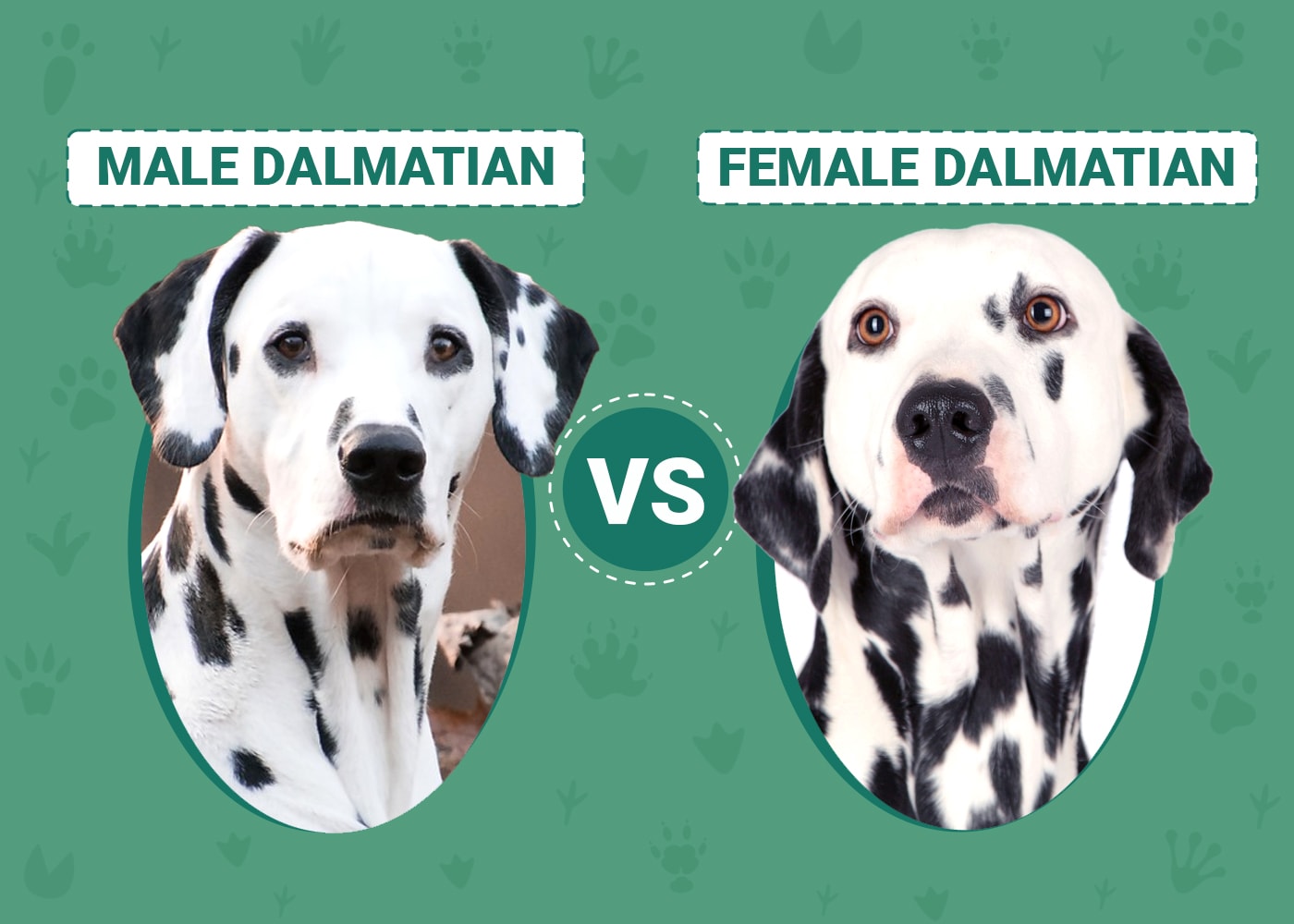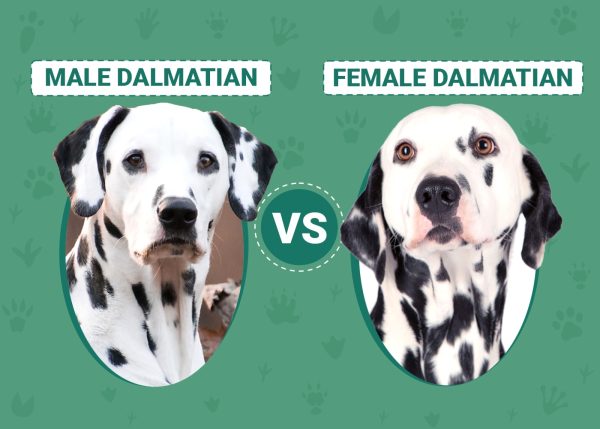Click to Skip Ahead
The Dalmatian is an eye-catching and iconic dog that has been featured in movies and as fire dogs for New York City’s Fire Department for about 150 years. It’s no wonder that you’ve been considering making the Dalmatian the next member of your family! But now you have to decide if you should get a male or a female.
Are there actual differences between the females and males of the Dalmatian breed? Yes, there are a few minor differences in temperament and appearance, and while both sexes are equally amazing, you might feel more inclined to prefer one over the other.
We’ll go over these differences in order to help you determine which sex might suit you and your family best of all.
Visual Differences
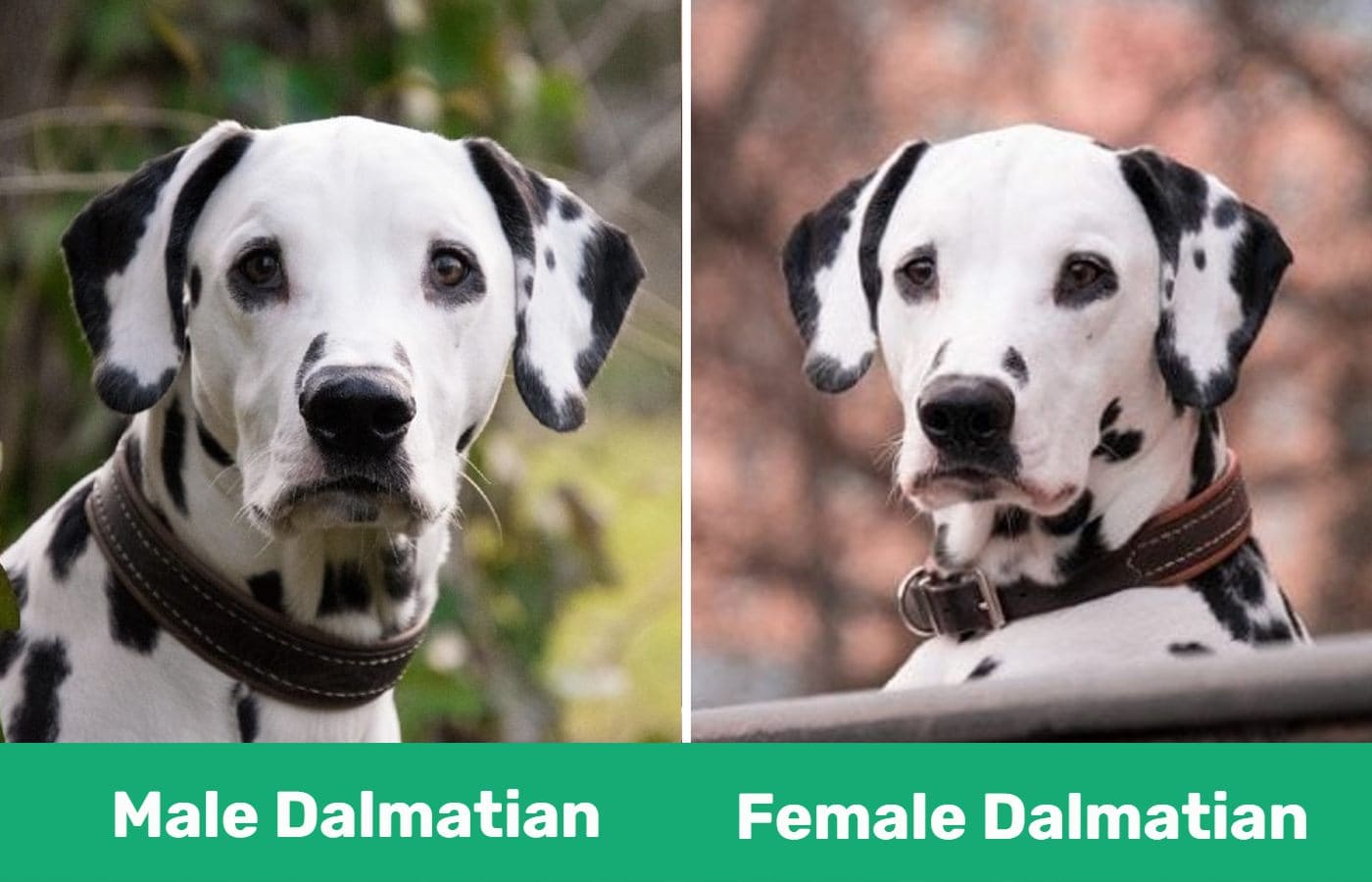
At a Glance
- Average height (adult): 21–24 inches
- Average weight (adult): 60–70 pounds
- Average height (adult): 22–23 inches
- Average weight (adult): 45–60 pounds
Dalmatian 101
We can’t talk about Dalmatians without first mentioning their striking appearance! They are known for their white coats with either black or liver spots, and they are medium-sized dogs that are sleek and graceful in appearance.
The Dalmatian’s origins are in question but are believed to be traced to Asia, Europe, North Africa, and the British Isles. There is evidence and artifacts found in Italian frescoes, Egyptian wall paintings, and medieval letters that showcase spotted dogs very much like our modern-day Dalmatians. However, they got their name in the early 19th century in the once-known region of Dalmatia in Central Europe.
Dalmatians also worked as coach dogs in the 17th century in England. They ran next to coaches, carriages, and horseback riders to help protect them from any threats while traveling. Their excellent work as coach dogs led to their now-famous firedog job, as they would accompany the horse-drawn fire engines as far back as the 1870s. They’ve even been circus dogs!
Dalmatians made such great coach dogs because they could be bred to guard both the coaches and the horses. This makes them naturally protective and have excellent stamina, so they can make perfect companions for runners and anyone looking for a watchdog.
Male Dalmatian Overview
Image Credit: Rebecca Scholz, Pixabay
Personality / Character
Male Dalmatians are affectionate and sweet dogs and are protective of their owners. They are also known to be loving and loyal dogs that love attention but can be obstinate and prone to ignoring commands at times.
Male Dalmatians are high energy and can sometimes exhibit aggressive behavior toward other male dogs. They can be silly and eager to please, and they are slower to mature compared to females.
Training
Male Dalmatians can be a little more difficult to train than females. This is partly due to their being stubborn and that the fact that they are not always quite as bright as the females. Males tend to need more patience and discipline, and their hard-headedness makes them more difficult to control and more of a challenge to keep them focused.
Generally speaking, Dalmatians tend to be harder to train than most dogs, and given their energy and larger size, males can be more challenging than female Dalmatians in this area.
Health & Care
Dalmatians in general need plenty of exercise as they are high-energy dogs, particularly the males. Expect to take them for long walks and runs. They will develop behavioral issues if they don’t have their mental or physical exercise needs met.
Grooming is no different between the male and the female. They both are fairly easy to take care of with occasional brushing and weekly checking and cleaning of their floppy ears.
Male Dalmatians are more likely to develop bladder stones than females. The Dalmatian breed generally has problems breaking down uric acid and is more prone to form urine stones than other breeds. If a male Dalmatian does, in fact, develop urine stones, they can become easily blocked, which is a life-threatening situation. Their urinary tracts are narrower and longer than the females.
While Dalmatians aren’t as prone to hip dysplasia as other, larger breeds, since the male is a little bigger and more muscular than the female, they are slightly more likely to develop this condition.
- Hypothyroidism
- Seizures
- Skin allergies
- Eye defects
- Excess cartilage and deficient bone growth
- Dalmatian bronzing syndrome
- Iris sphincter dysplasia
- Urinary stones
- Deafness
- Heart disease
- Hip dysplasia

Breeding
If you’re considering using your male Dalmatian as a stud for breeding purposes, one of the most important things to consider is the health of the dog. Many genetic health conditions can be passed down to the next generation.
You’ll also want to consider having the male fully registered if you hope to receive full price for the puppies. However, the female also needs to be fully registered. You’ll want the puppies to get the best in terms of health and in behavior and temperament.
If you don’t plan on having both a male and female, you can use your male for stud dog services.
If you aren’t interested in breeding, you’ll need to get your Dalmatian neutered. This will help reduce or even stop some of the more negative behaviors, particularly the aggression toward other male dogs.
- Protective at home and out on walks
- Affectionate and loyal
- Great in active homes
- Can be silly goofballs
- Form strong bonds with the family
- Not always that smart
- Stubborn
- Can be difficult to train
- Aggressive toward other male dogs
- Might be clingy
- Slow to mature
Female Dalmatian Overview
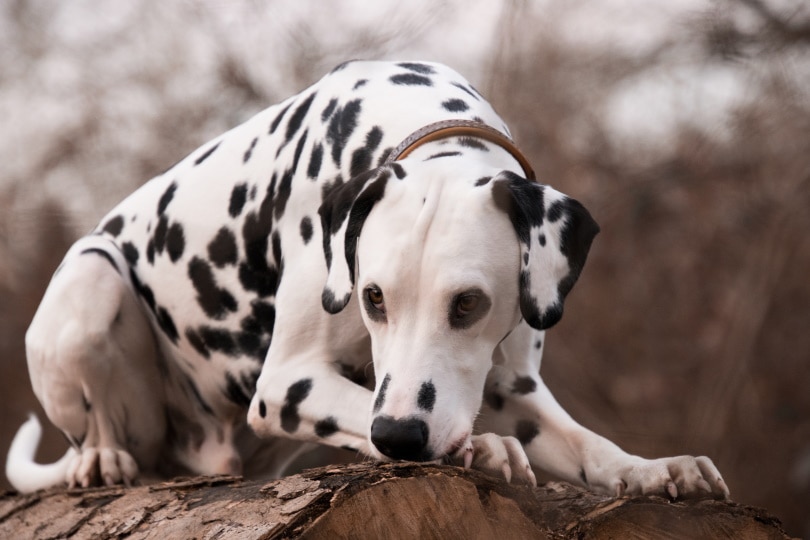
Personality / Character
Female Dalmatians tend to be lighter and a little smaller than the males and can be slightly easier to physically control. They aren’t as headstrong as the males and can be less dominant and aggressive. Female Dalmatians also tend to be brighter and cleverer. Similar to the males, female Dalmatians can be prone to aggression toward other female dogs.
They are also known to be less dependent and more self-reliant and independent in comparison to male Dalmatians. While female Dalmatians are affectionate like their male counterparts, they are more likely to only seek it out on their own terms.
Training
Training female Dalmatians is decidedly easier than the males. First of all, they mature faster than the males and therefore can be trained at an earlier age. Their smaller size makes them easier to handle, and since they tend to be smarter, it’s easier for them to grasp training quickly.
Lastly, the females aren’t as stubborn as male Dalmatians, so it makes them generally less challenging to train.
Health & Care
There aren’t any real differences in the grooming and exercising for either sex. Female Dalmatians require the same amount of exercise as males, but they might be prone to being a little lazier. The Dalmatian breed is high-energy in general, though, and regardless of the sex, these dogs will need a fair number of walks and playtimes.
Females are not as likely to get urinary stones as the males, but if they do, they can pass them easier. Females might still need surgery to remove them, but it’s not as likely as it is with males.
The Dalmatian breed is also prone to deafness, particularly if they are blue-eyed, but females are at a slightly higher risk for this condition over the males.
- Hypothyroidism
- Seizures
- Eye defects
- Skin allergies
- Excess cartilage and deficient bone growth
- Dalmatian bronzing syndrome
- Iris sphincter dysplasia
- Urinary stones
- Heart disease
- Deafness
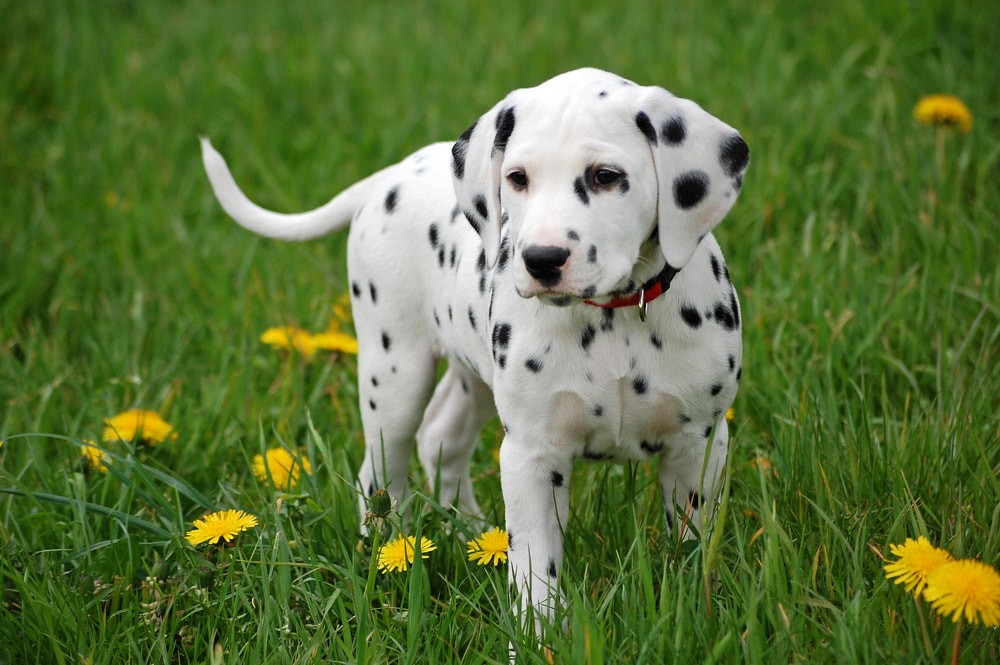
Breeding
Breeding the female Dalmatian has many of the same considerations as for the male. Health, temperament, and registration are all factors that need to be seriously considered. Both the male and the female should be registered if that’s the road that you want to go down.
Dalmatians tend to have litters of about seven puppies on average (more than nine and fewer than six puppies are quite rare). However, in 2019, a Dalmatian in Australia broke the world record and had 19 puppies! Dalmatians don’t necessarily have any serious birthing issues, but a C-section could always be a possibility.
If you opt to have your female Dal spayed, keep in mind that this surgery is more complex than the neutering procedure. This means a longer recovery time, and you should expect to pay extra for it. Nonetheless, it’s an important surgery that can help prevent unwanted pregnancies and undesired behaviors.
- Matures quickly
- Can be trained early and easily
- Smart and independent
- Gets along with male dogs
- Not that aggressive or suspicious of others
- Independence can make them more aloof
- Goes into heat every 6 months and can be “moody”
- More prone to deafness
- Might not get along with other female dogs
- Spaying is a more expensive operation
- Not as active, so might become couch potato
Which Sex Is Right for You?
Most of the traits and temperaments of these dogs can easily be applied to either sex. You can find female dogs that aren’t that bright and might show aggression, and you can find male dogs that are easy to train. Every dog will mature with a temperament that is somewhat dependent on their breed but more on how they were socialized as puppies and treated as adult dogs.
Generally speaking, if you’re looking for a slightly calm dog that isn’t clingy and is easy to train, you might want to consider a female Dalmatian. But if you prefer a goofy, sweet, and loyal dog with a ton of energy and that will form a strong bond with you, the male might be the way to go.
Just be sure to do your homework before you invest in a new dog. The Dalmatian is a gorgeous dog but won’t be the perfect fit for every family. Regardless of the sex, though, the Dalmatian will be an amazing addition to the right family.
Featured Image Credit: artofvisionn, Shutterstock

